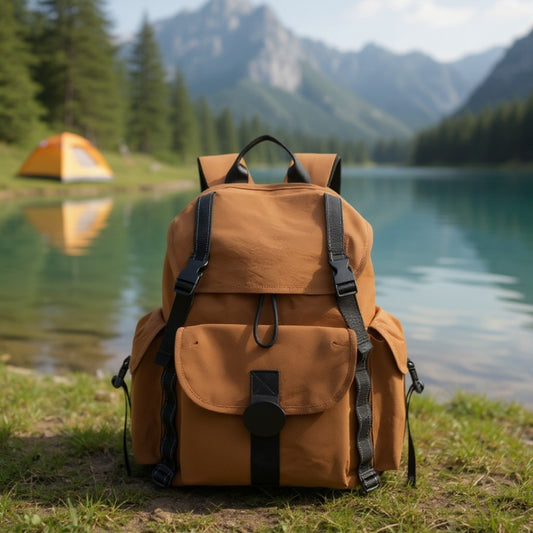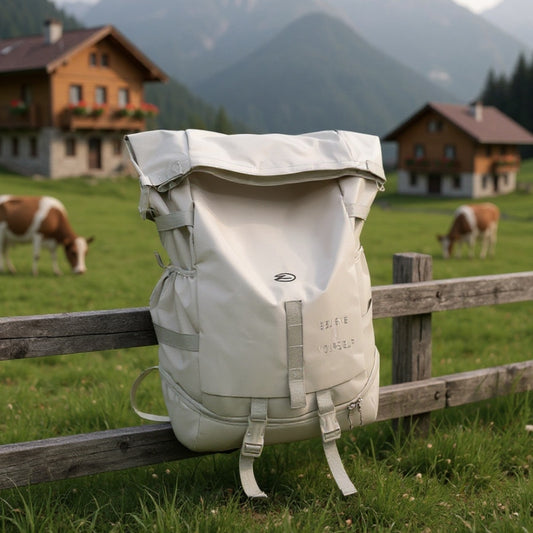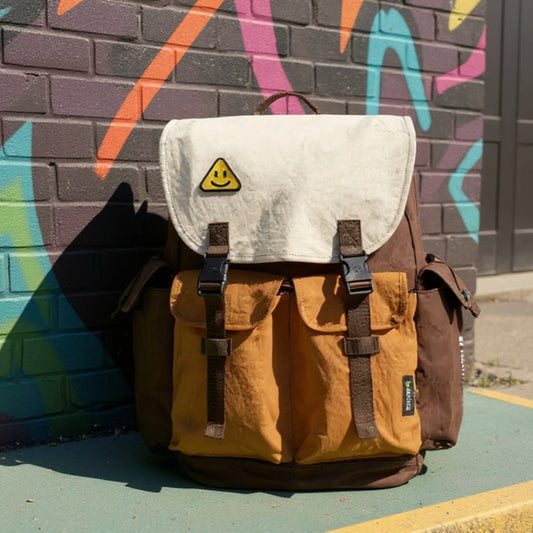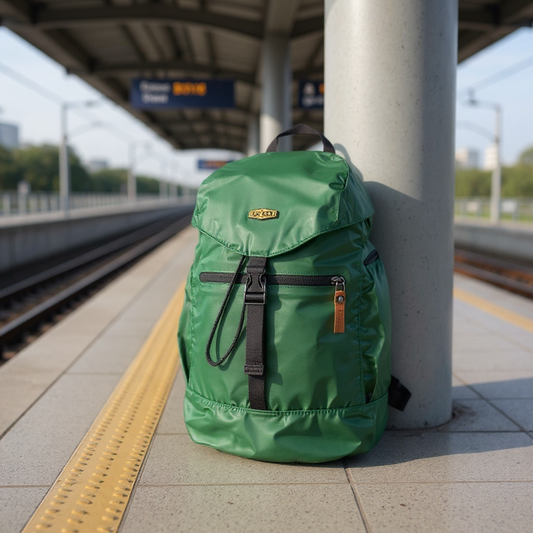Creek Fishing Safety: What I Learned After Two Falls
Compartir
Stood up too fast in a creek near Snoqualmie last July doing creek fishing. Rock under my right foot rolled sideways, and suddenly I was sitting chest-deep in cold water with my phone in my pocket.
Second fall happened about three weeks later, different creek. Same basic problem—moved too fast, wrong shoes, didn't pay attention to creek fishing safety.
After those two falls and one twisted ankle, I finally started taking creek fishing safety seriously. Should have done it sooner.
What Makes Creek Wading Dangerous
Creeks look friendly. That's the problem.
Lakes and rivers feel big enough to respect. Creeks feel manageable—water's only waist-deep, current looks mild, you can see the bottom. What could happen?
Turns out, plenty when you ignore basic safety.

Slippery Rocks Are Everywhere
Every creek has slippery rocks. Not some rocks. All rocks. Even ones that look dry on top are coated in algae underneath.
First time I fell was stepping onto what looked like a stable rock. It wasn't. The whole thing pivoted under my weight, and I went down hard enough to bite my tongue.
Jake (neighbor who fishes these creeks constantly) later told me: "Never put your full weight on a rock until you test it." Would've been helpful information 10 minutes earlier.
Current Is Stronger Than It Looks
Ankle-deep water moving at a moderate pace doesn't seem dangerous from shore. Get in it, and suddenly you're working harder than expected to stay upright.
Knee-deep water in the same creek will knock you over if you're not careful. Saw it happen to another angler last summer—guy was fine one second, swimming the next.
Current strength compounds as water gets deeper. What feels manageable at ankle depth becomes difficult at thigh depth in the same creek.

My Two Falls (What Actually Happened)
First Fall: Moss-Covered Rock Near Snoqualmie
Was fishing a run below a small riffle. Water maybe 2 feet deep, moving but not crazy fast. Caught a decent smallmouth, took a photo, started moving to the next spot.
Didn't see the moss-covered rock directly in front of me. Stepped on it with my full weight, rock rolled sideways, and I sat down hard.
Water went down my waders from the top. Phone was in my front pocket—waterproof case, but not rated for full submersion. It survived but the screen acted weird for three days.
My rod stayed dry because I held it up instinctively. The fish probably watched the whole thing.

Second Fall: Crossing to Better Fishing Spot
This time I was crossing from one side to the other to reach a pool I wanted to fish. Water about thigh-deep, moving faster than I expected.
Got 60% of the way across and my footing just wasn't there anymore. Rocks were smaller and looser than the first half of the creek. Stepped wrong, slipped, went down on one knee.
Not a full bath this time, but close enough. My buddy Mark (who was watching from shore) said later: "You looked determined right up until you weren't."
Twisted Ankle: Worst Injury Without Falling
Didn't fall, but almost worse. Stepped between two rocks, foot went deeper than expected, ankle twisted sideways.
Limped out of the creek, sat on a log for 20 minutes, and realized I still had to hike a mile back to my truck.
Ankle swelled up that evening. Took about a week before it felt normal again. Could've been way worse—Jake knows someone who broke an ankle doing the same thing and had to get carried out by search and rescue.

Essential Wading Safety Gear
After those incidents, I started doing things differently. Not because I'm smart, but because I finally had enough motivation.
Proper Wading Shoes Make the Difference
Cheap wading shoes work fine. They don't need to be expensive—they just need rubber soles with actual tread.
I was using old running shoes for my first season. Terrible idea. Zero grip on wet rocks, and the mesh upper meant water got in immediately anyway.
Switched to basic wading shoes and haven't fallen since.
Why Wading Belts Are Mandatory
Didn't own one until after my second fall. Now I wear it every time.
If you go in with waders on and no belt, water rushes in from the top and fills your legs instantly. Feels like someone poured concrete into your pants—one person described it as "gaining 250 pounds in three seconds."
Swimming becomes difficult, standing up becomes difficult, and you're in real danger.
Wading belt keeps most of the water out. Won't save you from a full swim, but it buys you time to get to shallow water and sort yourself out.

Safe Wading Technique: Sideways Steps
Walk normally in ankle-deep water. Switch to sideways shuffle steps when it gets to mid-calf or deeper.
Crossing your feet while stepping means immediate instability. Learned this from Jake after describing my second fall. "You probably crossed your feet," he said. I did.
Sidestep keeps your base wide. Test each step before committing your weight. Move slower than feels natural.
Keep Phone Protected But Accessible
First fall killed my confidence about keeping my phone on me. Thought about leaving it in the truck after that.
Jake talked me out of it. "What if you get hurt? Who's calling for help?"
Now I use a waterproof pouch that hangs from my pack strap. Phone stays dry, still accessible if something goes wrong. Compromise that works.
Common Mistakes That Cause Falls
Fish Upstream, Not Down
Every guide mentions this. I spent my whole first season fishing downstream anyway because it felt easier.
Walking upstream means:
- You're not muddying the water you're about to fish
- You're approaching fish from behind where they can't see you as easily
- If you slip, current pushes you back toward where you came from instead of into unknown deeper water
Takes longer. Works better. Finally started doing it after my second fall when I realized downstream wading is how you end up in trouble.
Don't Wade After Heavy Rain
After heavy rain, creeks run faster and higher than usual. Current strength that was manageable at normal flow becomes dangerous at flood stage.
Give it 3-4 days after significant rain before wading. Fish from the bank if you really want to go sooner.
I tried wading a creek two days after a storm last spring. Water was maybe 6 inches higher than normal, moving twice as fast. Got 20 feet from shore and backed out. Wasn't worth it.

Use the Buddy System in Difficult Spots
Solo fishing is fine most of the time. But crossing difficult sections alone is asking for trouble.
Mark and I crossed a sketchy spot last August by linking arms and moving together. One person tests the step, other person provides stability. Slow but effective.
You look silly doing it. Better than swimming.
What I Tell People Now
Someone asks about wading safety, I tell them my phone story. That usually gets their attention.
Then I mention the basics:
- Good shoes matter more than good rods
- Test every step in deep water
- Wade upstream when possible
- Wear a belt with waders
- Don't wade alone in difficult spots
Most people nod and probably ignore half of it. That was me too before I learned the hard way.
My Current Safety Gear
Wading shoes - $19 from store, three seasons old, still fine Wading belt - came with my waders, wear it every time now Waterproof phone pouch - $12 online, works well enough Compact backpack - stays dry, doesn't bounce around while wading
Nothing expensive. Nothing fancy. Just stuff that works.
The Reality
Creek fishing isn't dangerous like climbing or whitewater kayaking. But it's also not risk-free.
Most days, nothing goes wrong. You wade around, catch some fish, get out dry. Those are the good days.
But creeks don't care if it's a good day or a bad day. Step wrong, and you're wet. Step really wrong, and you're hurt.
The difference between those outcomes is usually just preparation and attention.
After my two falls and one twisted ankle, I finally pay attention. Hasn't made creek fishing less fun—just made it safer.
Phone survived both falls, by the way. But barely. That's what finally made me change my approach.
Some lessons cost more than others to learn.
The best hikes around Washington often cross creeks. Now I apply these safety lessons to any creek crossing, not just fishing.
Even on multi-day hiking trips, these wading principles help when crossing streams.




